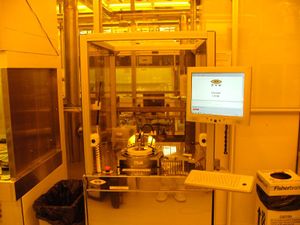Plasma Activation (EVG 810): Difference between revisions
Jump to navigation
Jump to search
(link to recipes page, not yet fixed Tool info link) |
(updated SOP & added recipe editing SOP) |
||
| Line 23: | Line 23: | ||
==Documentation== |
==Documentation== |
||
*[https:// |
*[https://www.nanotech.ucsb.edu/wiki/images/8/82/EVG_Plasma_Activation_SOP_Rev_B.pdf Plasma Activation Standard Operating Procedure] |
||
*How to copy recipes |
|||
== |
==Recipes== |
||
Please see the [[Oxygen Plasma System Recipes#Plasma Activation .28EVG 810.29|Oxygen Plasma Recipe]] page for standard EVG recipes. |
Please see the [[Oxygen Plasma System Recipes#Plasma Activation .28EVG 810.29|Oxygen Plasma Recipe]] page for standard EVG recipes. |
||
Revision as of 21:15, 9 October 2019
| |||||||||||||||||||||
About
This a capacitively coupled Oxygen plasma activation system used exclusively for the surface activation of clean surfaces prior to wafer bonding. This technique allows bonding temperatures to be lowered and is used as a companion tool to the Karl-Suss SB6 wafer bond tool.
Detailed Specifications
- Gases used: O2 and N2
- Sample size: pieces to 6” wafer
- Max power: 200W
- Recipes characterized for substrate thicknesses between 250um and 750um. Thicknesses outside of this range need to have parameters optimized to minimize reflective power.
Documentation
- Plasma Activation Standard Operating Procedure
- How to copy recipes
Recipes
Please see the Oxygen Plasma Recipe page for standard EVG recipes.
